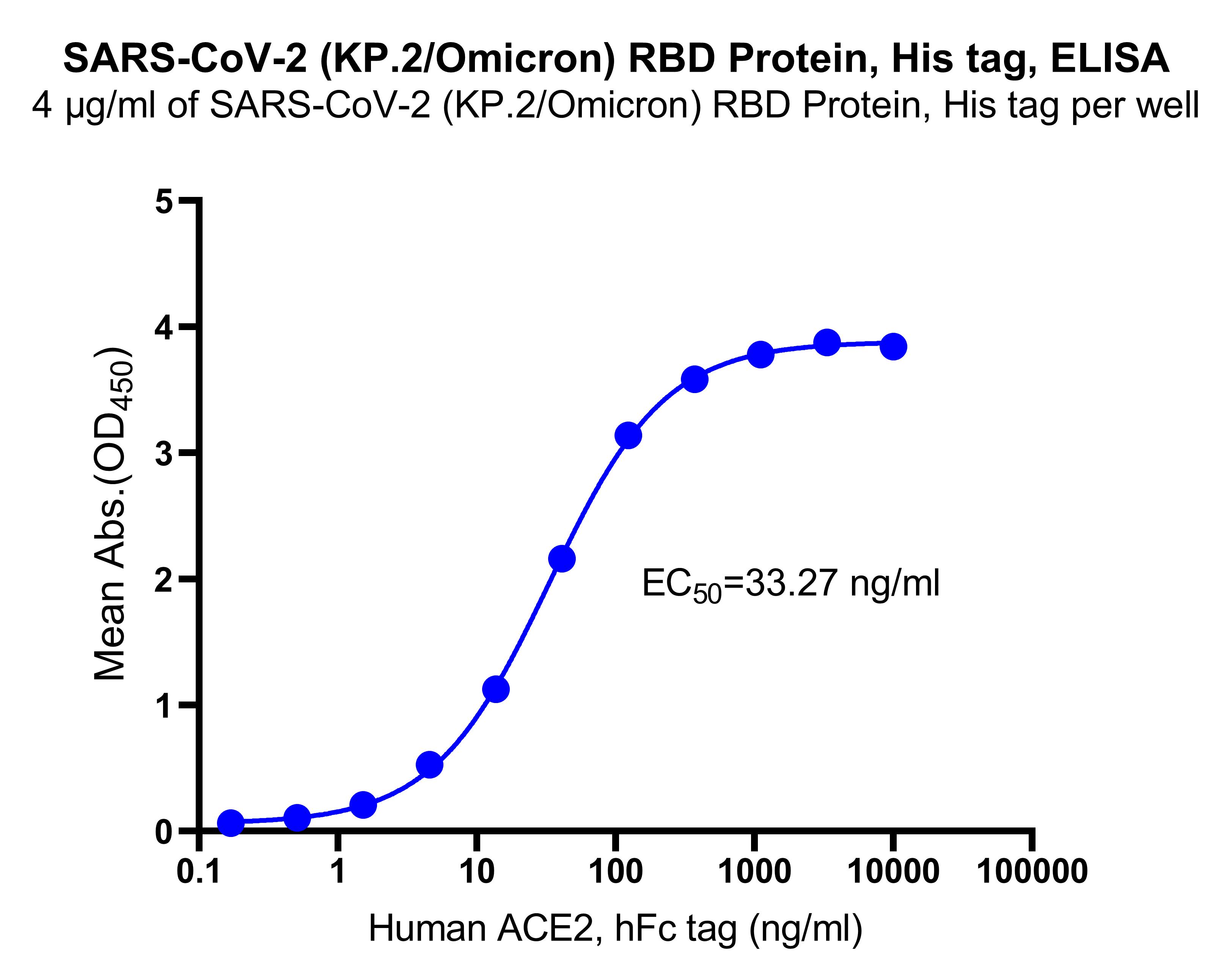Protein sequence (P0DTC2, Arg319-Lys537, with C-His tag) RVQPTESIVRFPNVTNLCPFHEVFNATRFASVYAWNRTRISNCVADYSVLYNFAPFFAFKCYGVSPTKLNDLCFTNVYADSFVIKGNEVSQIAPGQTGNIADYNYKLPDDFTGCVIAWNSNKLDSKHSGNYDYWYRSLRKSKLKPFERDISTEIYQAGNKPCKGKGPNCYFPLQSYGFRPTYGVGHQPYRVVVLSFELLHAPATVCGPKKSTNLVKNK
Predicted MW: 26.4 kDa Observed MW: 35-40 kDa
12 months from date of receipt, -20 to -70 °C as supplied.
6 months, -20 to -70 °C under sterile conditions after reconstitution.
1 week, 2 to 8 °C under sterile conditions after reconstitution.
Please avoid repeated freeze-thaw cycles.
KP.2 strain, a descendant of the highly contagious JN.1 variant. KP.2 is one of several variants being referred to as “FLiRT variants,” named after the technical names for their mutations. They are characterized by a phenylalanine (F) to leucine (L) mutation and an arginine (R) to threonine (T) mutation in the virus's spike protein. Sars-cov-2 infects human respiratory epithelial cells through binding to human ACE2 receptors. Spike protein is a large type I transmembrane protein containing two subunits S1 and S2. S1 mainly contains a receptor binding domain (RBD), which is responsible for recognizing cell surface receptors. S2 contains the basic elements required for membrane fusion. S protein plays a key role in inducing neutralizing antibody and T cell responses as well as protective immunity.

Immobilized SARS-CoV-2 (KP.2/Omicron) RBD Protein, His tag at 4 μg/mL (50 μL/well) can bind Human ACE2, hFc tag (Cat. No. S0A0071) with EC50 of 31.52-35.11 ng/ml.
2 μg(R: reducing conditions)